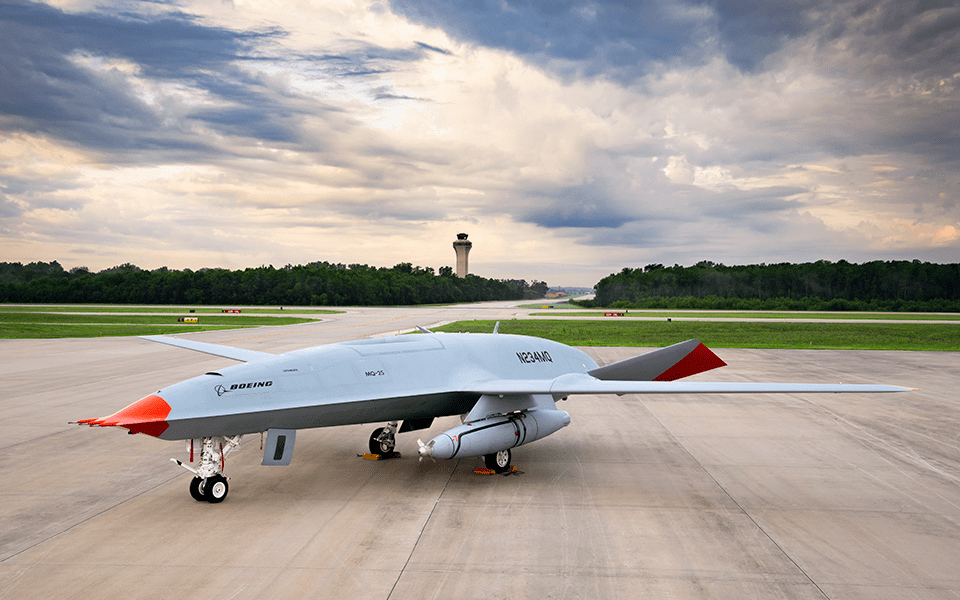
ARLINGTON, Va. — Unmanned aircraft, surface and under-sea vessels will help maximize the U.S. Navy’s future range across the Pacific Ocean, while ships and submarines armed with hypersonic or directed energy weapons could protect them in contested areas, the chief of naval operations says.
“Our biggest R&D effort is in hypersonics,” Adm. Mike Gilday told a live streamed question and answer session April 27 at the Center for Strategic and Budgetary Assessments, a Washington think tank. Hypersonic weaponry is planned for delivery in 2025. “First on surface ships and then on Block 5 submarines,” Gilday said. “We want to bring that kind of capability forward, using distributed maritime operations to come at an adversary in a variety of different vectors and make it very difficult for him to target us.”
Gilday said he sees unmanned systems as a path to affordability and lethality despite expected leaner defense budgets in coming years. “Probably by the mid-to-late 2030s, we think up to a third of the fleet could be unmanned, if everything goes right,” Gilday explained. “And for the air wing of the future, we think about the same, initially about 40%, potentially going to 60% unmanned” teamed with fourth- and fifth-generation fighters in contested areas,” he added.
The MQ-25A Stingray carrier-based unmanned aircraft system should reach initial operational capability around 2025, Gilday said. Once it’s integrated into the carrier wing, the Boeing-built Stingray will enhance aircraft carrier reach as a sea-based, aerial refueling drone, that can also provide persistent intelligence, surveillance and reconnaissance around the carrier strike group.
On March 16, the Navy and Marine Corps released the Unmanned Campaign framework, (https://seapowermagazine.org/navy-marine-corps-release-unmanned-campaign-plan/) which presents their strategy for making unmanned systems a trusted and integral part of warfighting. The Navy is conducting collaborative experimentation and rigorous testing of unmanned systems “to get to a point, in probably five to seven years, where we’re much more confident about two real big pieces: reliability and trust,” Gilday said.
He added that trust is all about command and control. Reliability, is key in terms of operations. “With respect to the surface fleet, we really want a platform that’s going to run, run, run, run and not break down on us,” Gilday said, noting the Freedom-class littoral combat ships have 7,000 sensors in their engineering plant. “We can’t have that kind of complexity on a platform that’s eventually going to be unmanned. It’s got to be very reliable.”
Unmanned platforms, both on and under the sea, are also going to play a major role in distributed maritime operations in the future, although they have not yet been classified as part of the battle force. “They’re separate and distinct from the 355” ship Navy mandated by Congress, Gilday said.
While the Navy’s strategy calls for highly mobile and distributed maritime operations in the Pacific, in an age of ubiquitous satellite imagery, “it’s going to be difficult to hide,” Gilday said, adding “Directed energy, with respect to the future survivability of the fleet, is really important.”
Noting that Navy ships from Ford-class aircraft carriers to Zumwalt-class destroyers generate excess electrical power, Gilday said, “If we could get that same capability on an unmanned vessel,” armed with a directed energy weapon, it could provide a surface fleet with a “high degree of defense-in-depth coverage against an incoming threat.”
- Shall We Play a Game? Winning Isn’t the Point, Experts Say - April 5, 2023
- U.S. Goal: Maintaining Extended Presence in Arctic’s Harsh Environment - April 4, 2023
- Joint, Combined Exercise Shows Marine Littoral Regiment Idea is on ”Right Track’ - February 24, 2023






